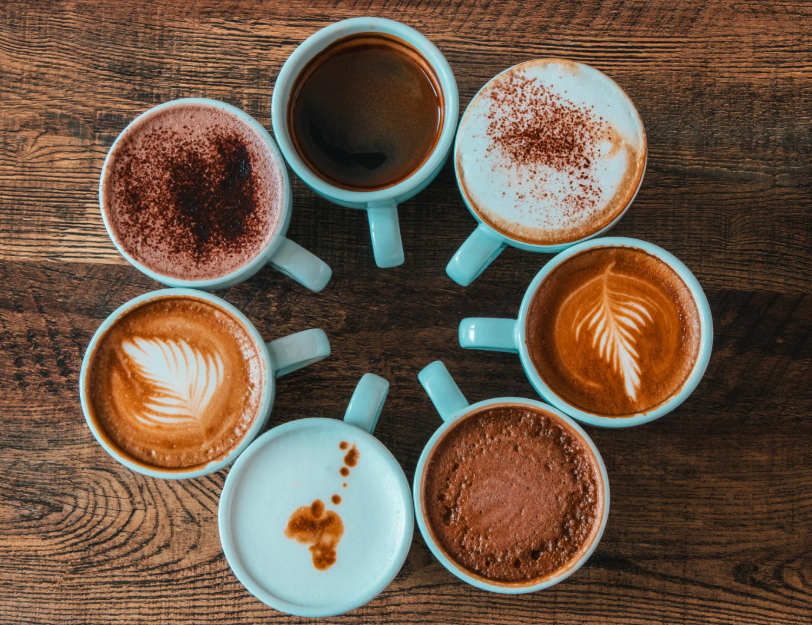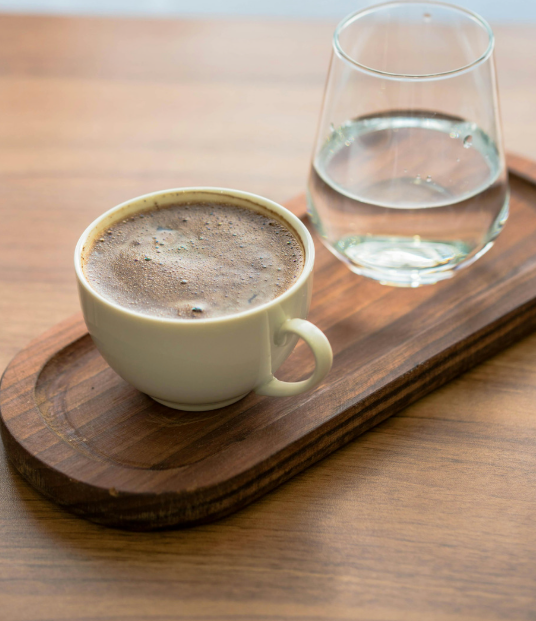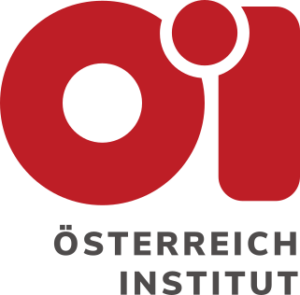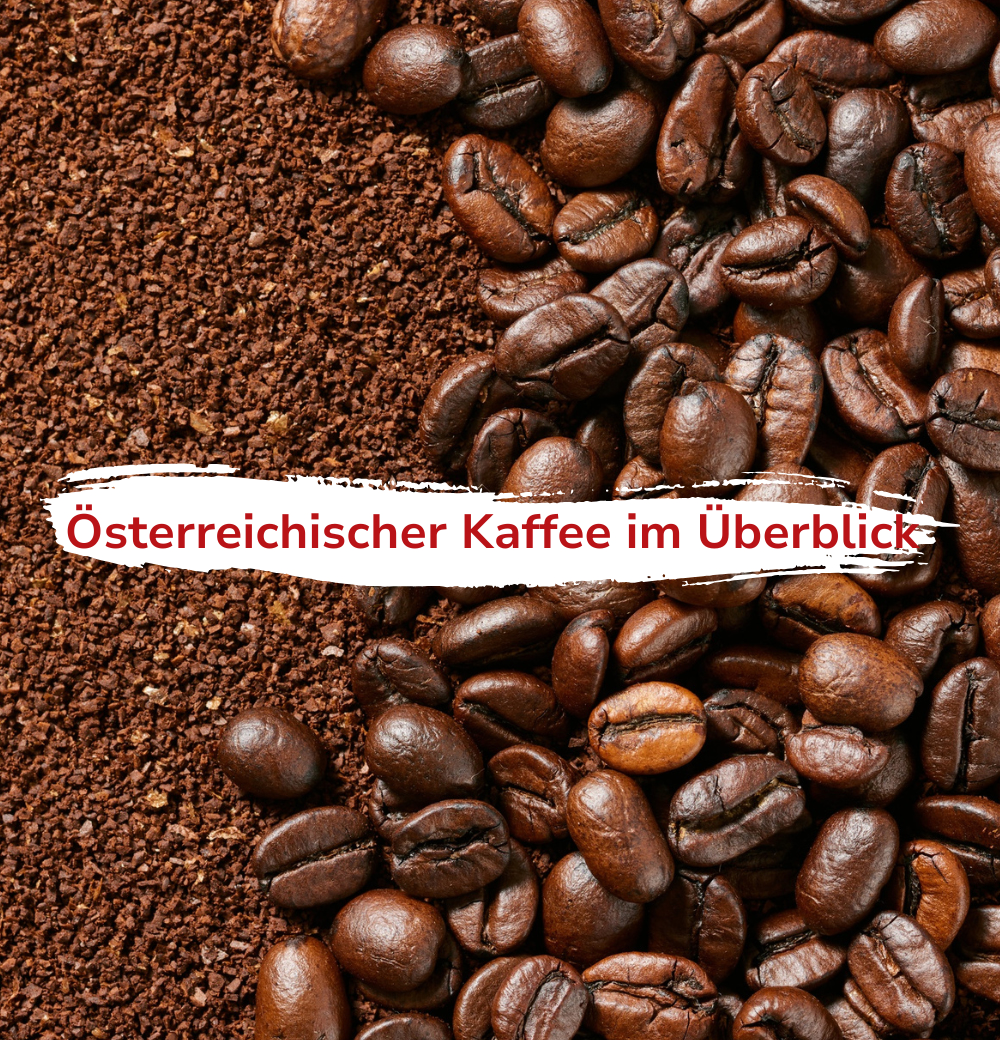Melange, Einspänner, Fiaker and Franziskaner: If you browse through the menus of Austrian coffee shops, you’ll come across numerous coffee specialities – Vienna in particular is known for its coffee house culture. But what exactly are all these creative names all about, and where did this variety come from in the first place? Here’s an overview of the most famous coffee creations – and their history.
History of coffee in Austria
Coffee has a long-standing tradition in Austria: Official records of coffee expenditure dating back to 1645 can even be found in the accounts of the Imperial Court Chamber in Vienna. A few decades later, after the second Turkish siege of Vienna had been quashed in 1683, 500 sacks of coffee were left behind. An Armenian merchant named Johannes Deodat immediately recognized the potential of such an unexpected find, and opened the first Viennese coffee house on 17 January 1685. While it sadly no longer exists, many others followed in Deodat’s footsteps, leading to a huge increase in coffee houses between 1700 and 1819 – from four to 150, with 25 of them located in Vienna’s city centre alone. This sparked the emergence of Vienna’s famous coffee house culture, with coffee houses soon becoming part of the city’s identity. They quickly turned into a special attraction for travellers, and were also a place where people could linger for hours. Coffee houses also became an indispensable meeting place for artists, writers and intellectuals– for people who, as famed writer Alfred Polgar put it, “need company to be alone”. A lively intellectual exchange took place here: Literary texts were recited, and topics like politics, art and science were passionately discussed. Vienna-born writer Stefan Zweig aptly described this very special atmosphere in his book “The World of Yesterday”:
“It represents an institution of a special kind that cannot be compared to any similar one in the world. It is actually a kind of democratic club, open to everyone for a cheap bowl of coffee, where every guest can sit for hours, discuss, write, play cards, receive his mail and, above all, consume an unlimited number of newspapers and magazines for this small fee.”
Until the middle of the 19th century, it was mainly men’s groups that gathered in the coffee houses to play billiards, read newspapers, write, discuss current affairs, and smoke. Later on, coffee houses for women started to emerge, where they spent their time relaxing, leafing through magazines or exchanging the latest gossip. Unsurprisingly, these establishments were initially met with scepticism in Viennese society because of the very specific clientele found there.Today, the classic Viennese coffee house is an open place where everyone is welcome to chat, read or work. Classic pastries such as apple strudel or the famous Sachertorte are also usually on offer. Many of the older cafés have successfully preserved the traditional atmosphere of olden days, including live piano music in the evenings or social events such as literary readings As a result of this lively tradition, Vienna’s coffee houses were named a UNESCO World Heritage Site in 2011.
| Tip: There’s more to Austrian culture than coffee houses – for more insights on local traditions, our bog posts on Austrian customs and Austrian music festivals are the perfect starting point. |
What are typical coffee types in Austria?

It’s not only coffee houses that are typically Austrian – as a matter of fact, plenty of classic coffee specialities were also created there. That’s why you’ll never just order “a coffee” in a Viennese coffee house, but choose your favourite from a wide variety of creations:
Viennese Melange
Probably the best-known Viennese coffee drink. Melange is French for “mixture”, and the coffee that goes with it comes from a time when France and its language were considered extremely elegant and fashionable at the Viennese court. This alltime classic is prepared with a single espresso, 20 to 50 ml of water and a little milk foam to top up the cup.
Verlängerter
The Austrian version of the Americano and the Italian espresso lungo. Due to its relatively low caffeine content – just one shot of espresso diluted with 20 to 50 ml of water – it’s an afternoon favourite.
Kleiner/großer Brauner
Literally translating to “small brown one” and “large brown one”, this type of coffee specialty is the Austrian equivalent to an Italian espresso or double espresso. It contains a single (“kleiner”) or double shot of espresso (“grosser”), and is served with a separate pot of milk or whipped cream so guests can choose for themselves how intense they want their coffee to taste.
Mokka
If you order a mocha in Austria, you’ll always get a simple espresso, optionally topped up with up to 20 ml of water. However, this is not a purely Austrian speciality, but also common in Turkey, Greece and Italy. What is clearly Austrian is the name “Kleiner Schwarzer” (little black coffee). Many people don’t actually realise they’re the same – with a “Grosser Schwarzer” simply being a double mocha.
Fiaker
In Vienna, a “Fiaker” can mean one of two things: Either a traditional horse-drawn carriage or a double mocha with sugar and a shot of alcohol, which the coachmen drank to keep warm on long journeys – preferably with slivovitz, kirsch or rum.
Biedermeier
This classic coffee specialty was named after the Biedermeier era in the 19th century and, like the Fiaker, is prepared with a shot of alcohol. If you want to make it yourself, you’ll need a double shot of espresso, a little milk, a dollop of whipped cream and a dash of apricot liqueur for the finishing touch.
Einspänner
Just like the Fiaker, the Einspänner owes its name to a traditional horse-drawn carriage, as its drivers were particularly fond of drinking it. It consists of an espresso and a generous topping of whipped cream, which back then prevented the coffee from getting cold and spilling over, even on cold and bumpy carriage rides.
Franziskaner
Contrary to the general assumption that this coffee was initially created by Franciscan monks, the name only refers to its colour, which resembles that of brown robes. The basis is a melange with a little water, hot milk, and a dollop of whipped cream added on top..
Kapuzin
This coffee is also named after monks, and was the original inspiration for the world-famous cappuccino. To make it yourself, all you need is an espresso, 20 to 50 ml of water, and liquid whipped cream – or, alternatively, a dollop of whipped cream.
A glass of water with your coffee

There are several reasons for the obligatory glass of water with coffee – and they are both historical and practical. Originally, the water glass was simply intended as a place to put the used spoon, but later became synonymous with quality.
With the opening of the First Vienna High Spring Pipeline in 1873 – just in time for the World Exhibition – the glass of water quickly turned into a status symbol, as Viennese coffee houses wanted to show that their drinks were only brewed with the best spring water, and show off its purity and freshness by presenting it in a glass. To this day, serving a glass of water with your coffee is still considered good manners in Vienna – a small but delicate touch.
| Tip: Looking to learn more useful Austrian words or want to improve your German language skills? At the Österreich Institut we offer a wide range of German courses for every language level from A1 to C2 – both for individuals, groups, and companies. |
Whether you prefer to order a classic mocha or a traditional speciality such as the Einspänner, with these basics you are perfectly prepared for your first (or next) visit to a Viennese coffee house. By the way: if you want to remain polite in a coffee house, don’t call for the “waiter” or “waitress”. In Vienna, the proper term is “Herr/Frau Ober”. Viennese charm has its own rules, and if you stick to the rules, you may even be served with a polite “gnädige Frau” or “gnädiger Herr”.
Want to find out more about the language, people and life as a whole in Austria? Our blog is packed full with useful knowledge and info, including our guide to famous Austrian writers, typical Austrian cuisine, and our best tips for learning German. Happy reading!

